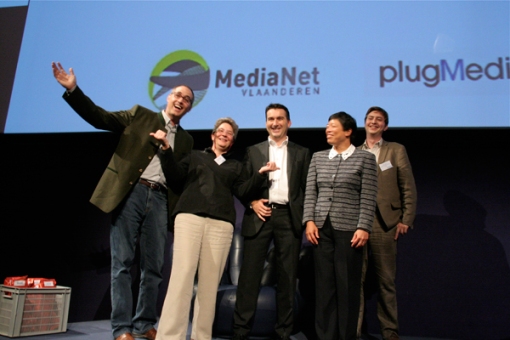October the 1 st we had our Design for persuasion conference in Brussels. When I drove home after a last dinner with the international speakers, I was tired but so fulfilled with joy and happiness.
Working for several months on this conference with Dr. BJ Fogg was an interesting experience. The topic is pretty new in Belgium, and since the internet is a participation platform and a mass medium, maybe bigger then television, and Mobile will even be bigger, we can apply persuasive technology to these platforms.
We had several international speakers, but also some early adaptors from Belgium, like Bart De Waele and Steven Verbrugggen. BJ highlighted on different behavior in his behavior grid, each behavior needs a different approach. There are also persuasion windows, where people are more open for persuasion and therefor also more open to a behavior change. If we want t provoke a behavior change, three elements need to occur at the same time. Motivation, ability and trigger. If one of those three elements are missing, the behavior change will not take place.
Dan Lockton talked about design with intent, the most striking example is in an airport, where seats are designed, so you cannot sleep on them. Dan is working on different design patterns, in different areas, which also leads to influence a certain behavior. Dan has developed a design with intent toolkit, which you can consult on his site.
Amy Shuen, gave an insights on how to make money in the Web 2.0 environment, and how businesses can implement web 2.0 in enterprises. Or how we will go from web 2.0 to enterprise 2.0. Collaborative innovation, why flickr in the beginning changed its model and started working with premium services in one of the most popular photo sharing application. Other examples were explained on how to generate ROI in these new models.
Bart De Waele did an interesting talk on how we can make websites more addictive, with all the above elements in it. While Steven talked more on the potential in the mobile market.
Richard Sedley went more into the marketing area and talked about the 6 persuasion principles for digital effectiveness. Explained more on the persuasion windows, where people are likely more open for persuasion.
This conference was one of the first worldwide, which was a mix of academics with industry, on the topic persuasive technology. I found it was very successful, and gave an insight on the research in the domain, and how it is applied in the real world. Howest is specialized in applied research and tries to put research results direct into the market. You will hear from persuasive technology a lot more in the future, as the social aspect in our digital world will get more and more important.
There is a lot more to persuasive technology, market growth, ethics, worldwide innovation and more…, most probably one of the topics in our next edition.
The next edition will also have an award session, so if you have cool applications, or have setup persuasive experiences, let us know!
One big message: think clearly, start small and grow.
Thanks to all the speakers, and my team to make this a big success!
Brought to you by Howest (Christel De Maeyer) and Stanford University (Dr. BJ Fogg)!
On slideshare you find the presentations
